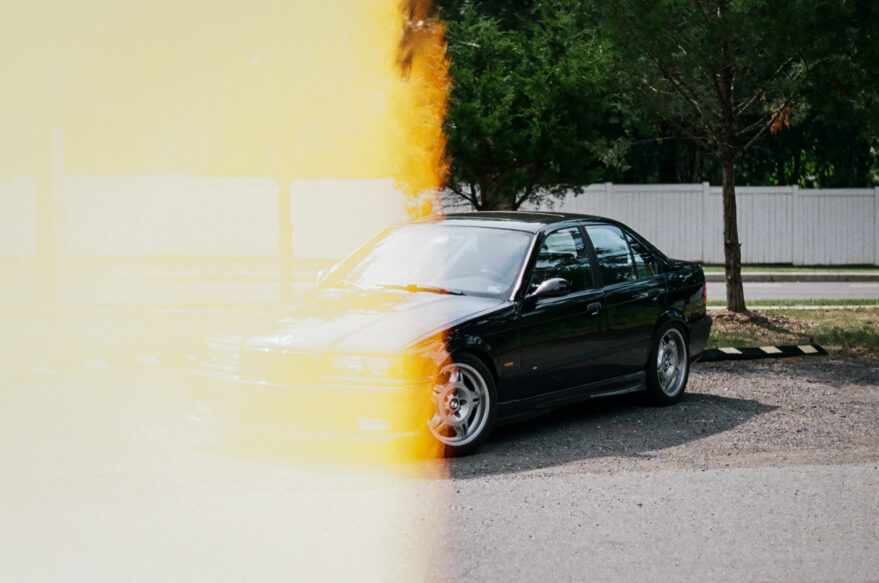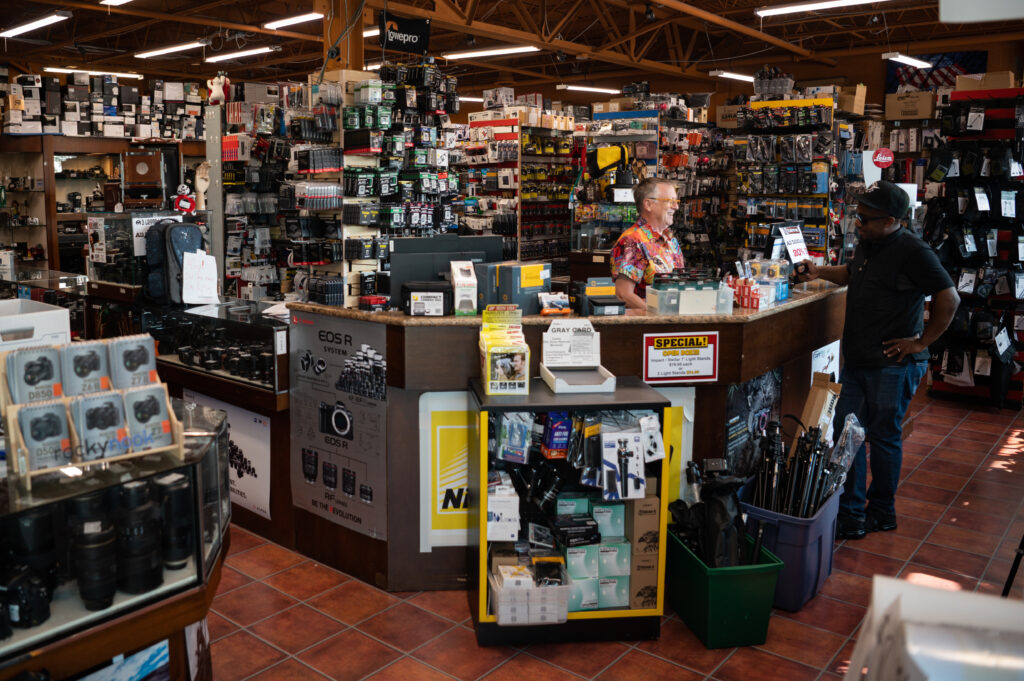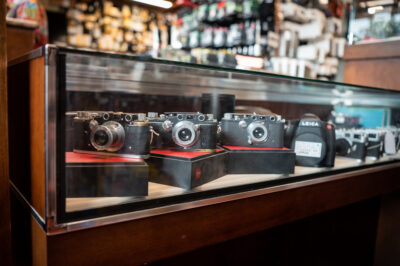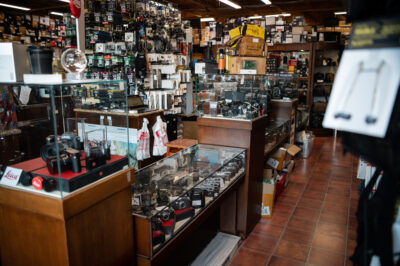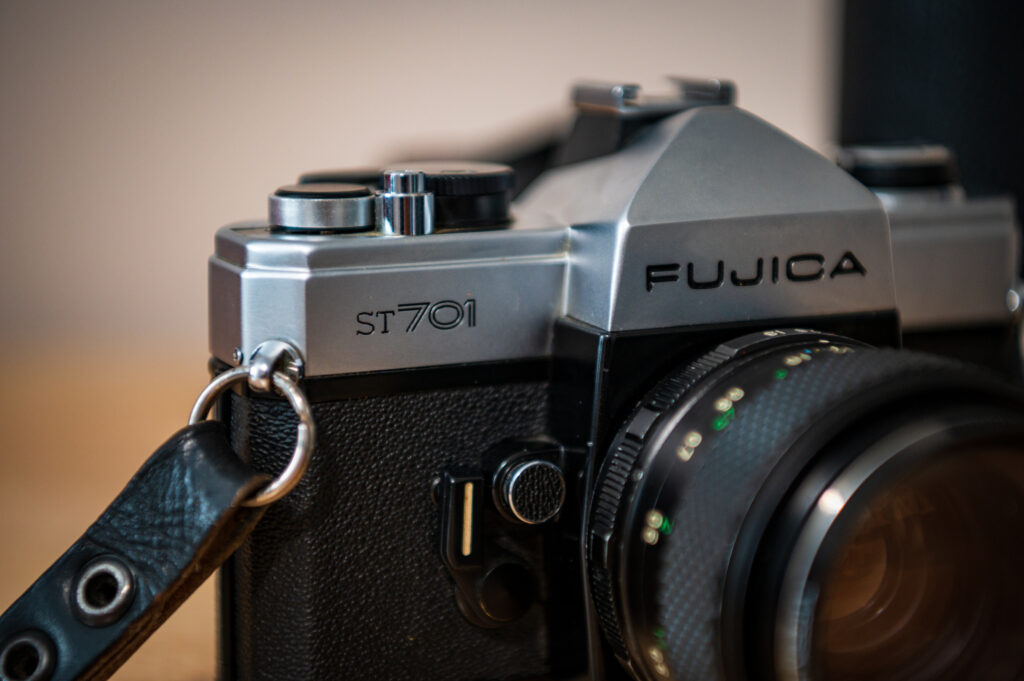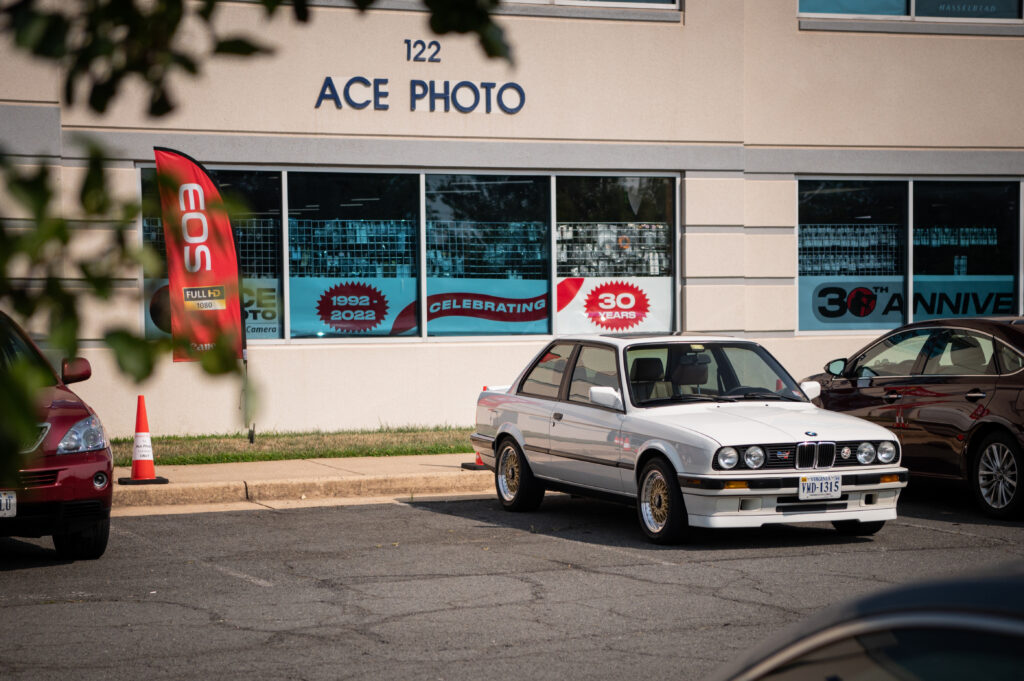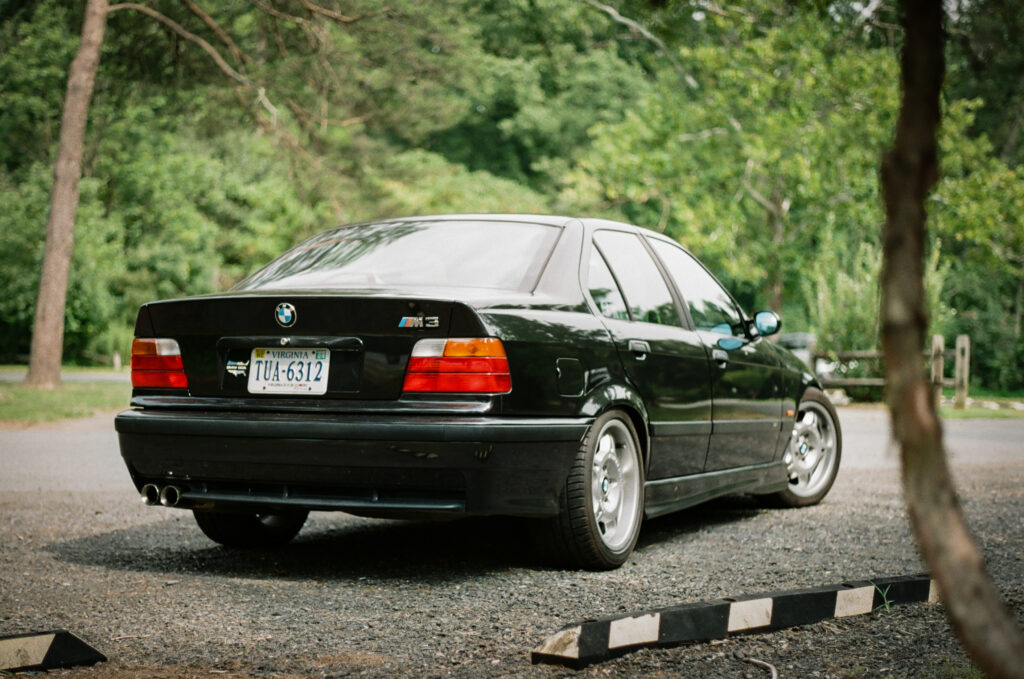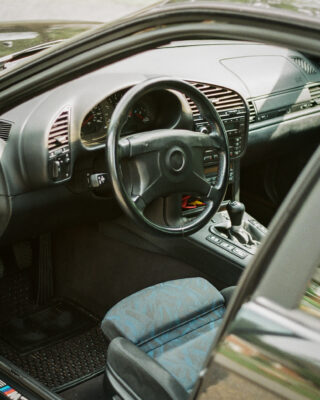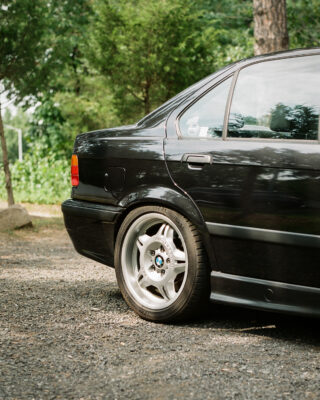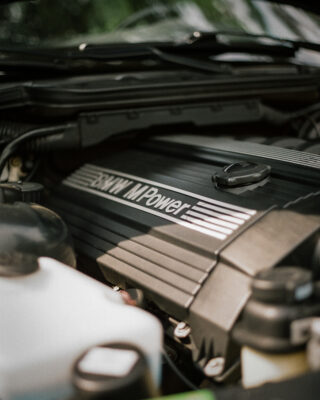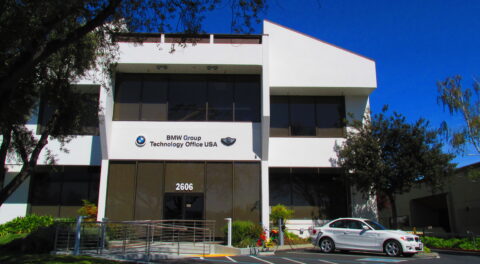Have you ever put something in storage, forgot about it for a few decades, and then rediscovered it? Earlier this week, I unearthed an old camera—an early 1970s 35mm Fujica ST701 to be exact. I remember first seeing it in my grandparents’ basement sometime in the late 1980s, along with two lenses and a 3X teleconverter. Though it was my uncle’s camera, my grandparents said I could have it. After cautiously playing with it for a few weeks, or at least as cautiously as any sub-ten-year-old could, I put it in a sealed metal box along with some comic books and baseball cards.
The camera and lenses lay buried in my mom’s basement for years, even after I moved out and was living on my own in a small one-bedroom condo. They came back into my possession about twelve years ago, when I cleared my remaining items out of my mom’s house and moved from that one-bedroom unit into my first (and current) house with my wife. The metal container went onto a shelf in our storage closet where it sat—until last week, that is.
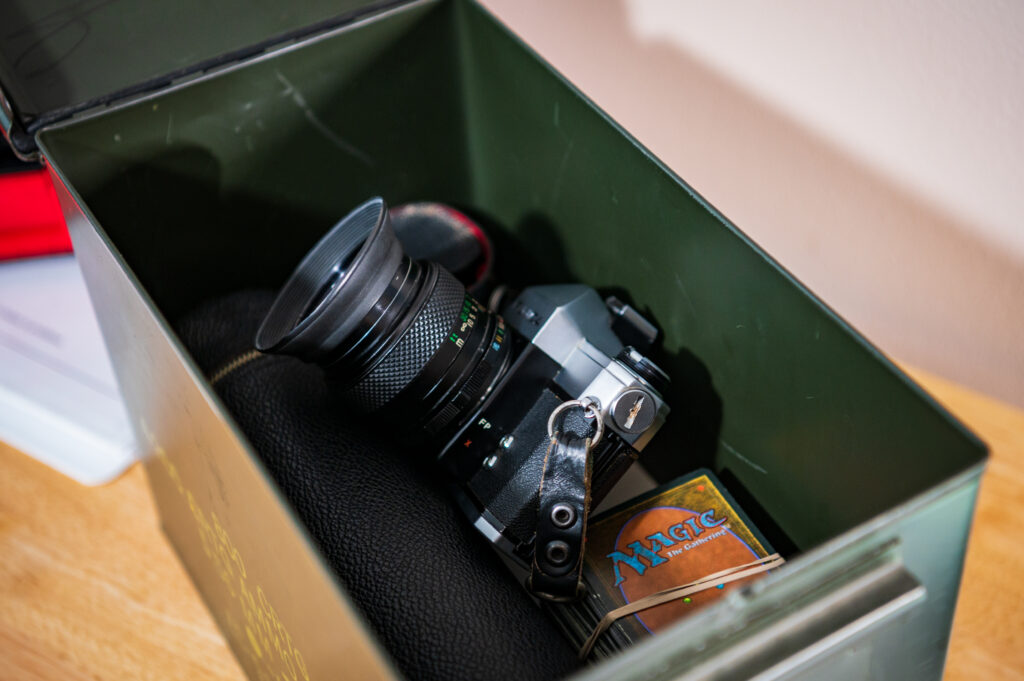
I suppose I had to have opened this in the mid 1990s as Magic: The Gathering didn’t debut until 1993. I can only imagine thinking “Those cards are going to be worth something someday.”
We decided to do some spring cleaning in late summer. For whatever reason, I opened the sealed metal container and took out the items covering the Fujica ST701, lenses, and teleconverter. And like Neo in The Matrix, I said, “Whoa.”
Though I’ve never found a preserved classic car in a barn, coming across this camera after so many years definitely had barn-find vibes. And just like taking on a new project vehicle, I wanted to test and, if necessary, start fixing this classic camera immediately, with the goal of using it for a classic BMW photo shoot.
As with both of my classic BMW projects—yes, I’m calling my E36 a classic—the first order of business for this vintage camera was a thorough cleaning. I disassembled the easily accessible parts of the ST701 and cleaned it with a variety of household and camera-specific supplies. After an hour, the body, lenses, and teleconverter were all looking quite presentable, inside and out. There were no scratches on the lenses—a Fujinon 55mm f/1.8 and Soligor 90-230mm f/4.5—the view-finder was clear and free of debris, and all of the mechanical bits appeared to function correctly. Well, except for the light meter, which required new batteries that are no longer produced. Oh, and the film advancement shaft was missing a couple of teeth, so film likely wouldn’t load or advance correctly.
The next phase of the project would require more than just sweat equity. Similar to an automotive project, deciding how far to take camera refurbishment can be a slippery slope. It’s kind of like buying a reasonably priced 250,000-mile ’98 M3 sedan and then dumping gobs of blood, sweat, and tears—and let’s not forget money!—into it. It doesn’t always make financial sense, but sometimes it’s more about the journey and less about the destination. While it would be great to use this camera for at least one roll of film, I didn’t want to needlessly throw financial caution to the wind. Been there, done that, and I own t-shirts adorned with E30s and E36s.
After a few interspersed hours of internet research, I found a couple of websites dedicated to the ST701 and similar 35mm cameras. I even found an old scan of the user manual. And just like the car forums of yore, dedicated photography fans had solved the unavailable battery issue by substituting the old mercury batteries with a pair of stacked 1.35V hearing aid batteries—no doubt the work of someone that goes by The Hack Photog.
I could’ve placed an online order and had the batteries delivered the next day, but instead I took a trip to one of the few remaining local photography stores, Ace Photo in Ashburn, Virginia. There, I could pick the experts’ brains, buy some parts, and support a local business. Plus, it was good driving weather. I chose my ‘98 M3 sedan for this adventure and the recently reassembled engine performed well. In fact, it was on this very trip to Ace Photo that I hit the 1,000-mile mark after Alex Garcia and I replaced the S52’s head gasket six weeks prior.
Ace Photo is a magical place. With seemingly endless rows of glass cabinets filled with vintage and modern camera gear, it’s kind of like walking the lot at a well-attended eclectic Cars and Coffee event—there’s a bit of everything. They had the proper spec batteries in stock, but after a test fit we found they were slightly too big. Trusting a random Amazon review and two-decade-old forum posts, I bought the batteries with the intent of sanding down the plastic washer surrounds to make them fit in the camera housing. I also purchased a couple rolls of Kodak Ultramax 400 film as I was determined to take some photos with my rediscovered Fujica relic. $52 later and I was on my way.
- Drool.
- And more drool.
Sanding the plastic washers down did the trick, allowing the batteries to fit properly in the ST701’s housing. However, they didn’t power the light meter, which meant something had failed internally. Similar to my M3 a couple of months ago, the Fujica’s head would need to come off. I’d need to inspect and diagnose why the light meter wasn’t functioning. While it was apart, I could replace or repair the film advancement shaft, which no longer held the film in place.
It was at this moment that I took a step back and paused. If the goal was just to shoot a roll of film, I could find a few temporary workarounds. It didn’t need to be perfect. I didn’t need to spend swaths of time (and money) tracking down half-century-old camera parts. So, I downloaded a free light meter app on my phone and I used a small piece of blue painter’s tape to hold the end of the film to the advancement shaft. That’ll do!
- Hearing aid batteries, sanded to fit.
- Painter’s tape for the temporary win.
Excited to take some photos, I loaded a roll of film (after watching a YouTube video on how to load a roll of film) and drove my M3 to a small local park to put this very clean, slightly broken, 50-year-old Fujica ST701 into action. Referencing the scanned online manual, I set the film speed to 400 by lifting up and rotating the shutter speed dial. I opted for the Fujinon 55mm f/1.8 lens as it would hopefully shoot similarly to the Nikon 35mm f/1.8 lens on my crop sensor Nikon D5600 that I had grown so familiar with.
I spent the next twenty minutes taking photos. The satisfaction I received from winding the film advance lever for each shot is difficult to put into words. The smooth manual focus was a treat to use. The very loud mechanical click when pressing the shutter release seemingly shook the whole camera. It was kind of like driving a car equipped with a proper manual instead of a super-fast automatic with all the bells and whistles—it may not be as fast, but it sure is engaging and fun!
Not fully trusting the light meter app on my phone, I experimented with various shutter speeds hoping that at least one photo would be decent. 30 shots went by in a flash—see what I did there?—and I was soon taking the long way home in my M3.
The next day, I headed back to Ace Photo to drop off the film to be developed and digitized. It was an E30 kind of day, so I took my 318iS the long way to the shop—yes, I take the long way a lot. The staff at Ace Photo were very friendly and shared in my excitement as I relayed the previous day’s events, laughing at the series of hacks I employed to shoot a single roll of film. We chatted about cameras and cars, and I explored the display cabinets full of cool photography gear.
I’d receive my digitized photos the following day, and so the 24-hour countdown clock had begun. After years of instant gratification using digital cameras, being able to see a preview on the camera body and immediately download, process, and edit photos on my laptop, waiting for this roll of film to be developed was an odd form of torture.
I did receive the photos the following day (which happens to be today), and here are the results. Drum roll please!
Ouch. I must have exposed some of the film while loading—cough, jerry rigging, cough—it. Still, it’s a cool effect.
Better. Someone needs to work on their manual focus skills, though.
Better still.
Oh no! I’m running out of film.
Now I’m getting the hang of this!
Well, you get the idea. For my first foray into film photography, using a slightly broken 35mm camera that had sat in storage for the majority of its 50-year life, I’m quite happy with the results. This little adventure turned out to be about both the journey and the destination. I still have one roll of film remaining, so I plan to give this another shot—the photography puns are flying today!—at a local car meet in the near future. And for what it’s worth, I can probably pick up a fully functioning Fujica ST701 on eBay for $50 or less, so this one may be destined for display on a bookshelf. Or it may end up in a sealed metal container for my kids to find in a couple decades. —Mike Bevels
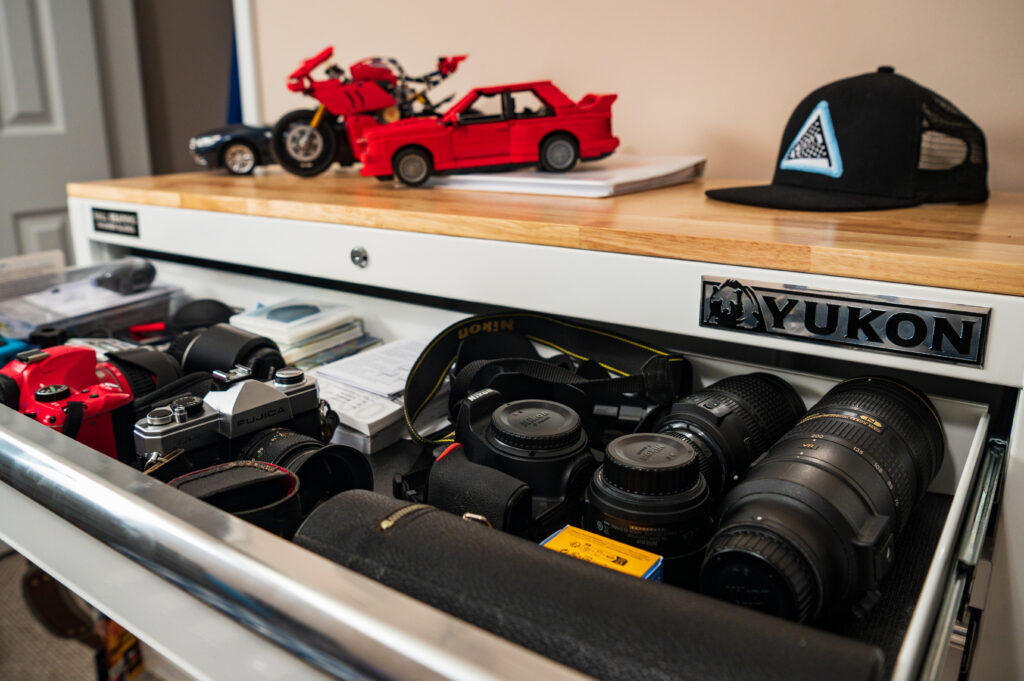
Does anyone else have a tool chest in their office used to store camera equipment and office supplies?

